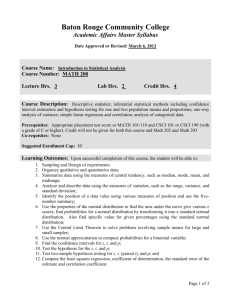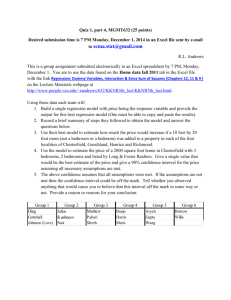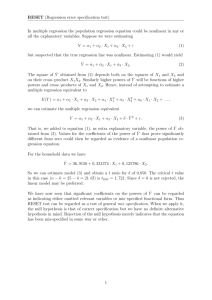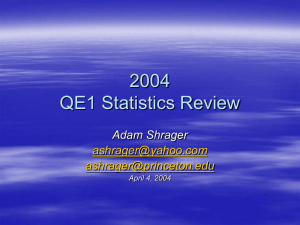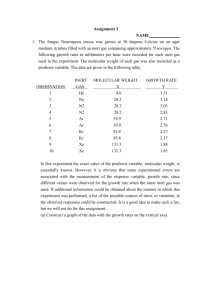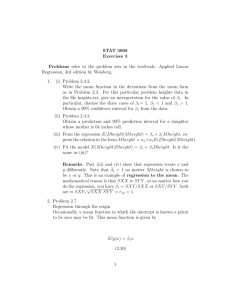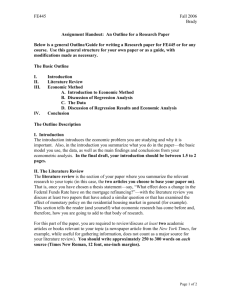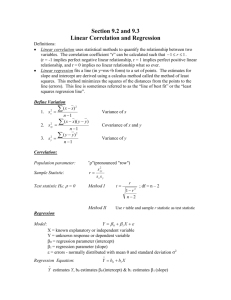REGRESSION – NON-LINEARITIES, STATISTICAL
advertisement
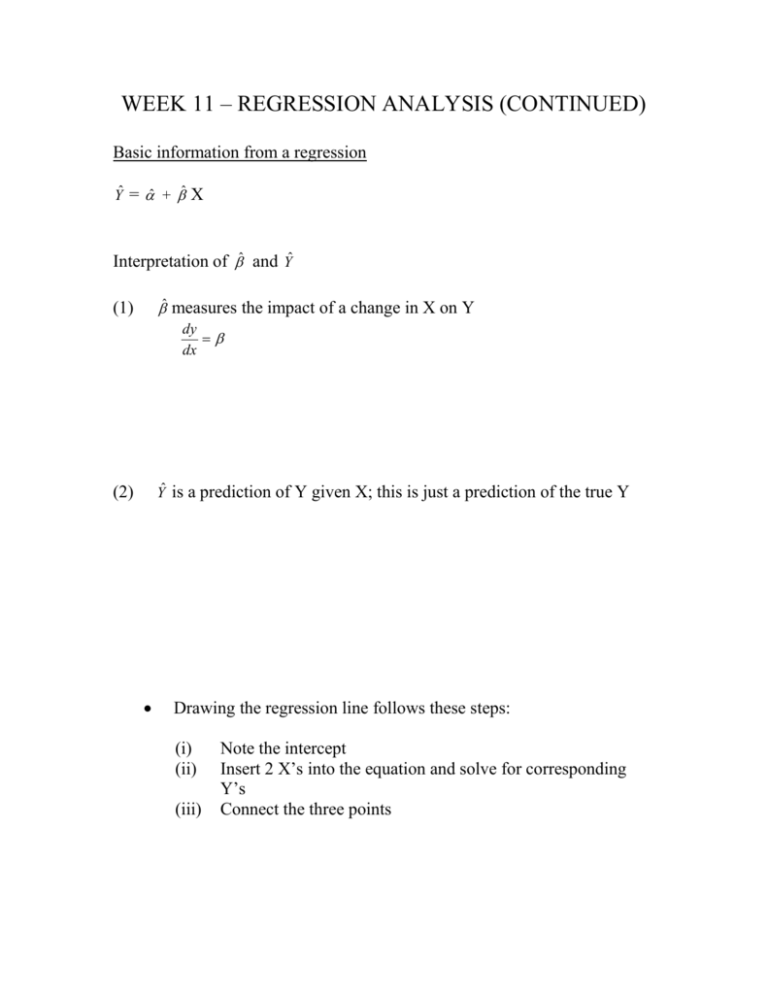
WEEK 11 – REGRESSION ANALYSIS (CONTINUED)
Basic information from a regression
Ŷ = ̂ + ̂ X
Interpretation of ̂ and Ŷ
(1)
̂ measures the impact of a change in X on Y
dy
dx
(2)
Ŷ is a prediction of Y given X; this is just a prediction of the true Y
Drawing the regression line follows these steps:
(i)
(ii)
(iii)
Note the intercept
Insert 2 X’s into the equation and solve for corresponding
Y’s
Connect the three points
Goodness of fit of our regression line
-
our estimates of the intercept and the slope represent the best fit
among all possible lines;
-
But how good of a fit is it? The coefficient of determination
N
R2 =
(Yˆ Y )
i 1
N
(Y
i 1
-
i
2
=
Y )2
Re gression sum of squares RSS
Total sum of squares
TSS
R2 is bounded by zero and one; an R2 closer to one is a better fit;
closer to zero is a poor fit
Statistical Evaluation of Regression Estimates
Typically, we would like to determine whether ̂ allows us to infer
something about , the population parameter
-
this will include constructing confidence intervals for , as well
as conducting hypothesis tests
̂ is measured with error
sb:
standard error of our estimate of (se)
Constructing a confidence interval for ̂
̂ tbsb
tb:
a t value which is given by the t table for a given level of
significance and the number of degrees of freedom {df is
equal to N – number of variables in analysis (2 for a
simple regression)}
sb:
standard error of our estimate of (se)
Several factors will determine how wide one’s confidence interval is:
(i)
The greater the number of observations, the more precise is our
estimate
(ii)
The smaller the sum of squared residuals the more precise is
our estimate
(iii)
A larger spread in the values of the X’s the greater the precision
-
example of a confidence interval
̂ = 216.44
se = 38.25
95% interval:
[ ̂ - tbse < < ̂ + tbse]
For 95% and 8 df, t = 2.306:
[216.44 – 2.306(38.25) < < 216.44 + 2.306(38.25)]
[128.24 < < 304.64]
Hypothesis Testing
We often would like to know whether our estimate of , along with its
corresponding standard error, allows us to conclude anything about
the population parameter
Step 1: Often, we test whether we can conclude is different than 0
H0:
= 0 {variable X has no effect on Y}
HA:
0 {variable X has an effect on Y}
Step 2: Test statistic:
t =
ˆ
sb
Step 3: This is then compared to a critical value from the t-table for a
given level of confidence (two-tailed test) and degrees of freedom (N
– 1 – k; k: number of independent variables)
Example:
t = 216.44/38.25 = 5.66
critical value for 95% confidence ( = .05) and 8 df: 2.306
Since 5.66 > 2.306 {reject the null hypothesis}
Step 4: Often the rule of thumb when looking at regression output is
to reject the null if t > 2, which means that there is a statistically
significant relationship between the independent variable and the
dependent variable

